Globetrotters of the Chesapeake region
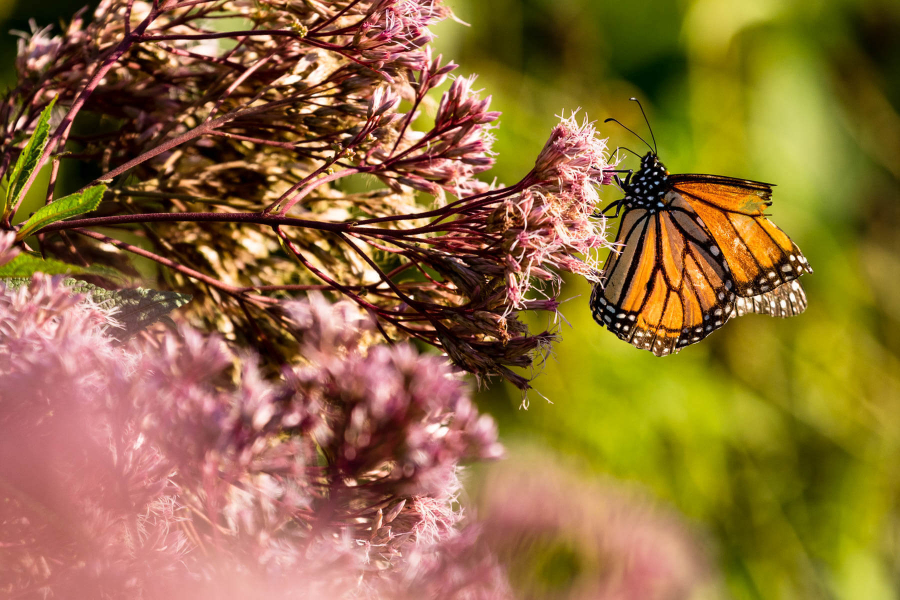
Welcome, travelers! You don’t have to live full-time in the Chesapeake watershed to know that it is well worth the visit. Human travelers come from all over, and some of our iconic wildlife species are part-time residents as well. Meet a few of the species who make the long journey to call our watershed their part-time home.
Osprey
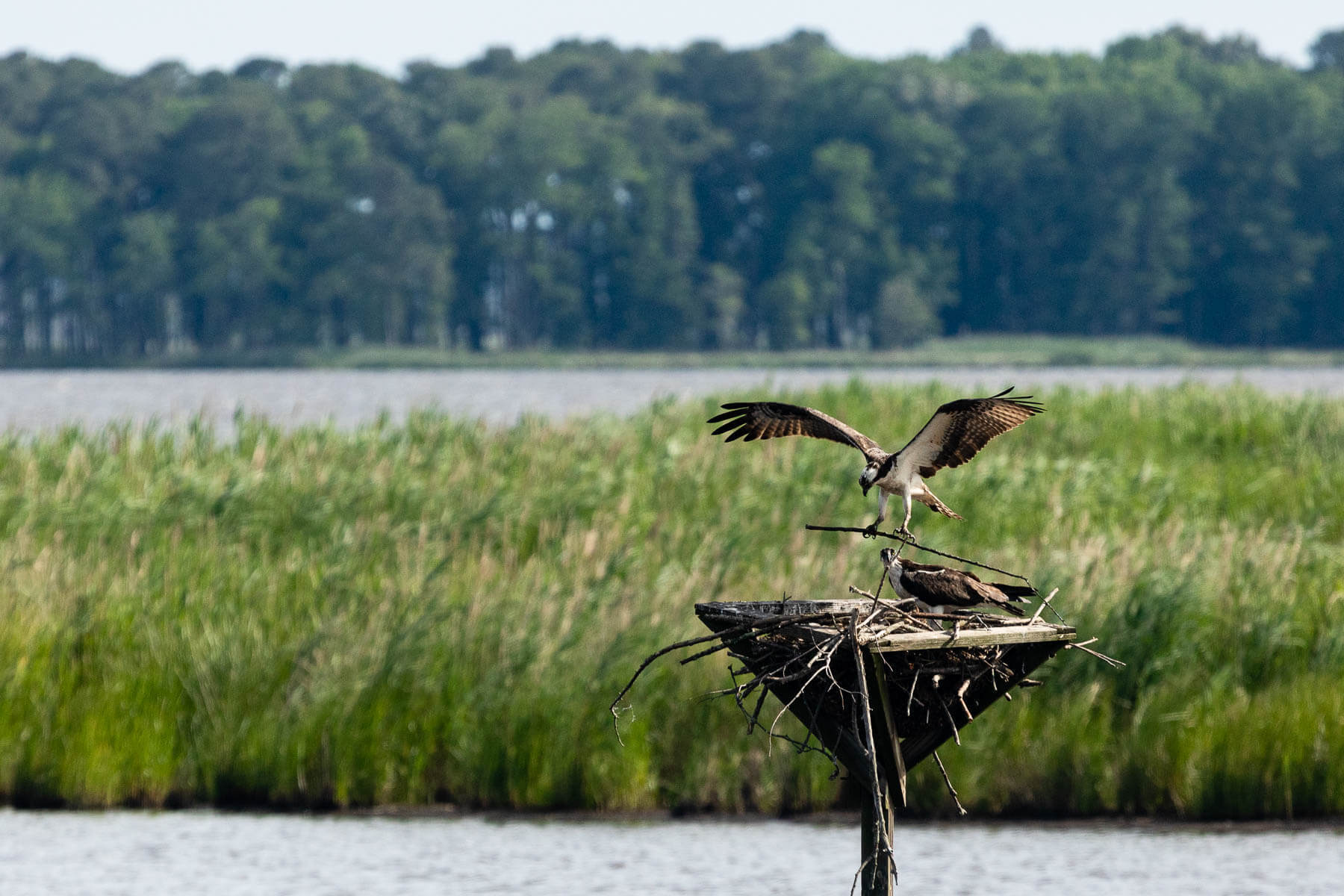
This first animal is such an icon of the Chesapeake Bay that it’s hard to believe it doesn’t live here year-round. Ospreys build their nests and raise their young in tidal portions of the Chesapeake throughout the spring and summer, disappearing from our waters for South America when the cold sets in. In its 15 to 20-year lifetime, an osprey may log more than 160,000 migration miles. Ospreys feed on fish, staying near open water and torpedoing down feet-first to snatch perch, shad and menhaden from below the surface. Their unique feet, which include four grasping toes with barbed pads, help them hold onto slippery fish and carry them face-forward in a way that minimizes wind resistance. We almost lost our ospreys to the effects of DDT in the 1960s, but chemical regulations and conservation efforts have helped them recover. Today, the Chesapeake is home to 10,000 breeding pairs and the largest concentration of nesting osprey. The whistles and chirps of an osprey call herald the return of spring to the Chesapeake Bay.
Black Duck
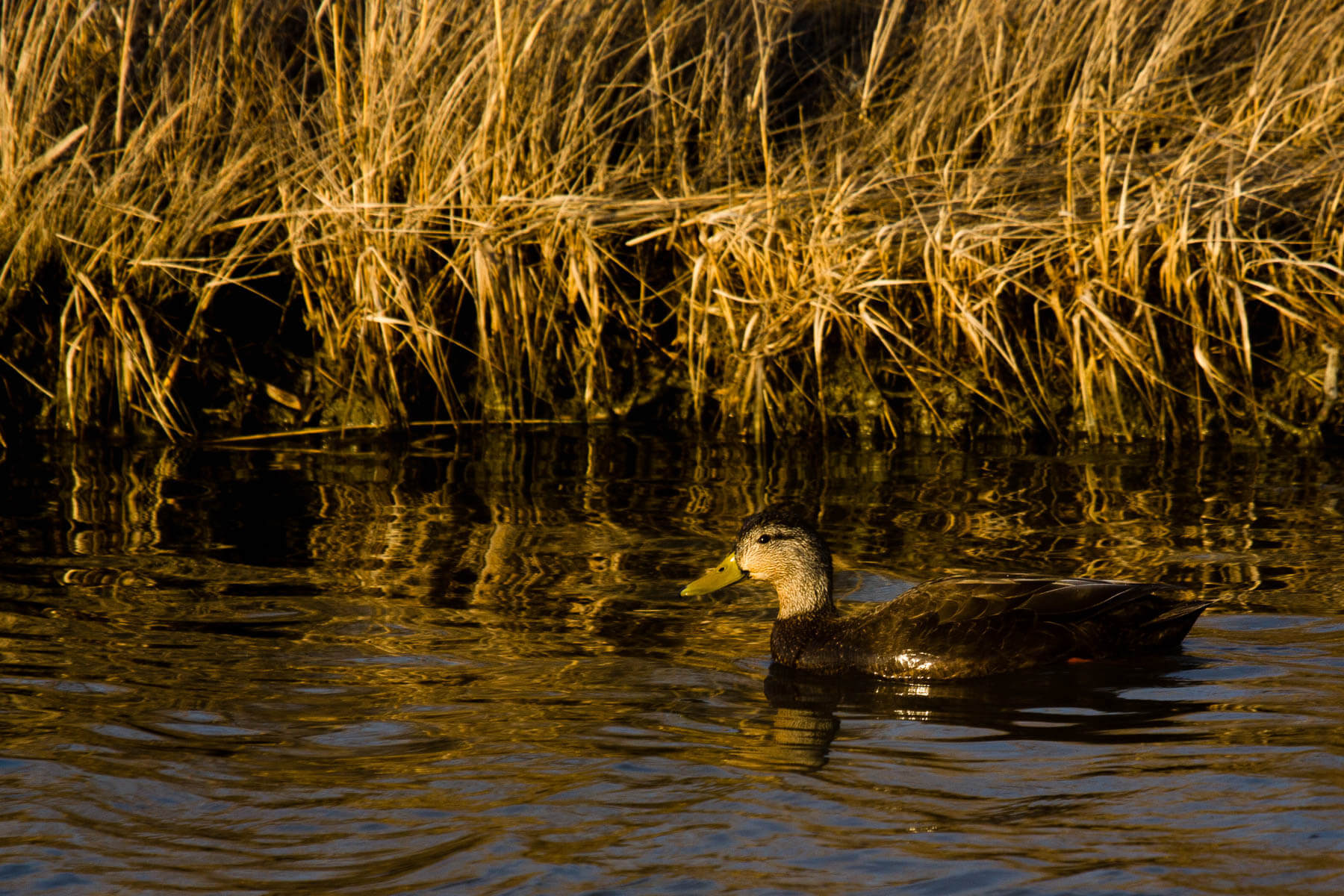
Black ducks are shy little birds who were once the most abundant dabbling duck in eastern North America. They prefer to stay out of choppy waters, and when they’re here are more often found in quiet backwaters and calm pools. Black ducks feed in the Chesapeake during the winter and breed further north in Canada. They migrate a relatively shorter distance compared with other migratory birds, but also show up all over the world. According to Cornell's Guide to Birds, one female black duck originally banded in New Brunswick, Canada later turned up in France. Here in the Chesapeake, loss of wetland habitat has caused black duck populations to drop dramatically, leading the Chesapeake Bay Program to form an action team to identify and secure high-quality habitat for wintering populations. Chesapeake wetlands are so well-suited to the needs of black ducks that some of the birds live here year-round.
Lion’s Mane jellyfish
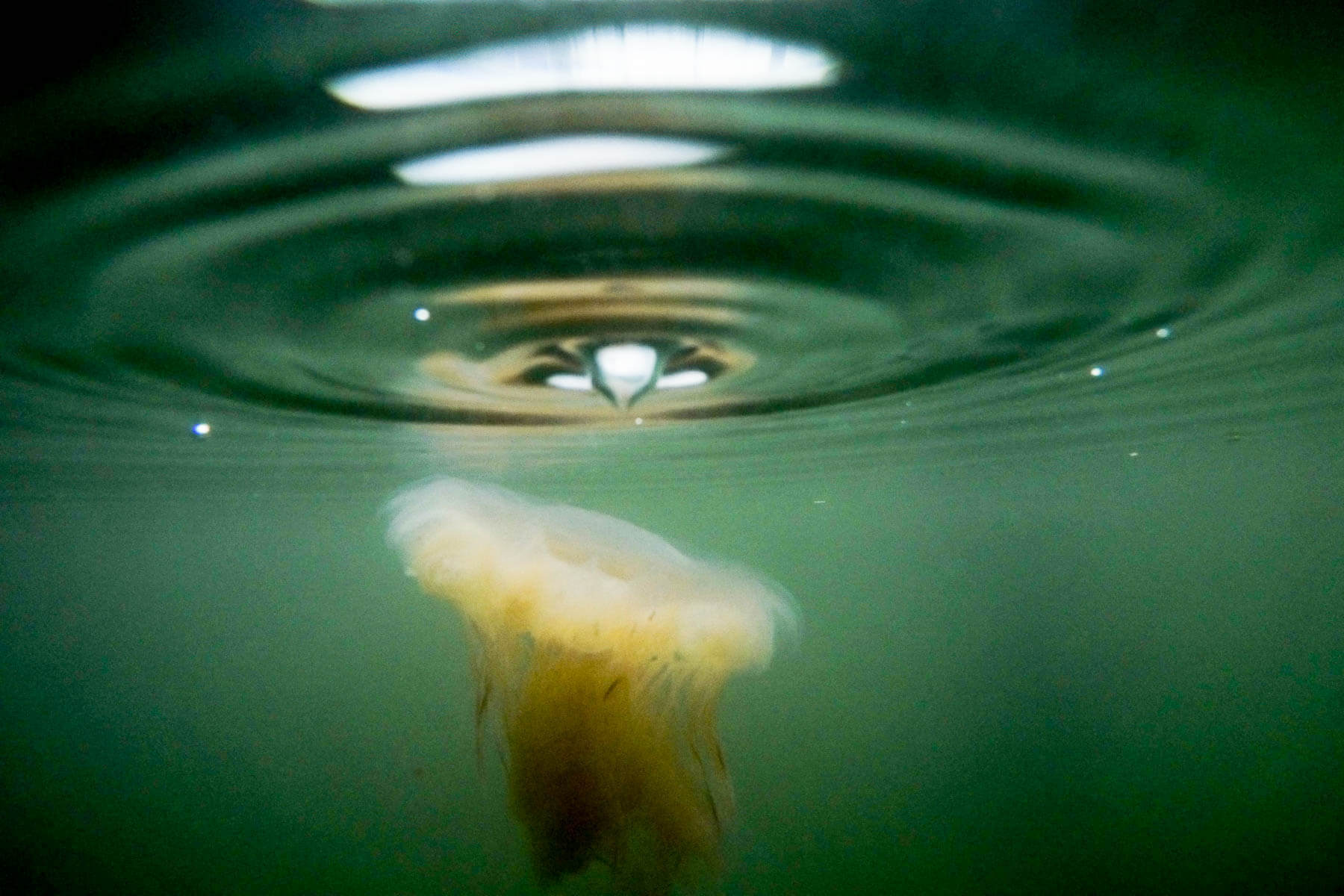
Believe it or not, the world’s largest jellyfish can be found in the Chesapeake Bay. The lion’s mane jellyfish thrives in chilly Arctic waters, so it only visits our reaches on winter currents between November and March. In the Chesapeake Bay, lion’s manes rarely become larger than six inches across, with most reaching less than four inches in diameter. Further north and closer to its Arctic range, lion’s mane jellyfish get bigger. In the open ocean where it prefers to live, its tentacles can reach up to 120 feet long with bells (the top part of the jellyfish) stretching up to six feet across.
Eastern red bat
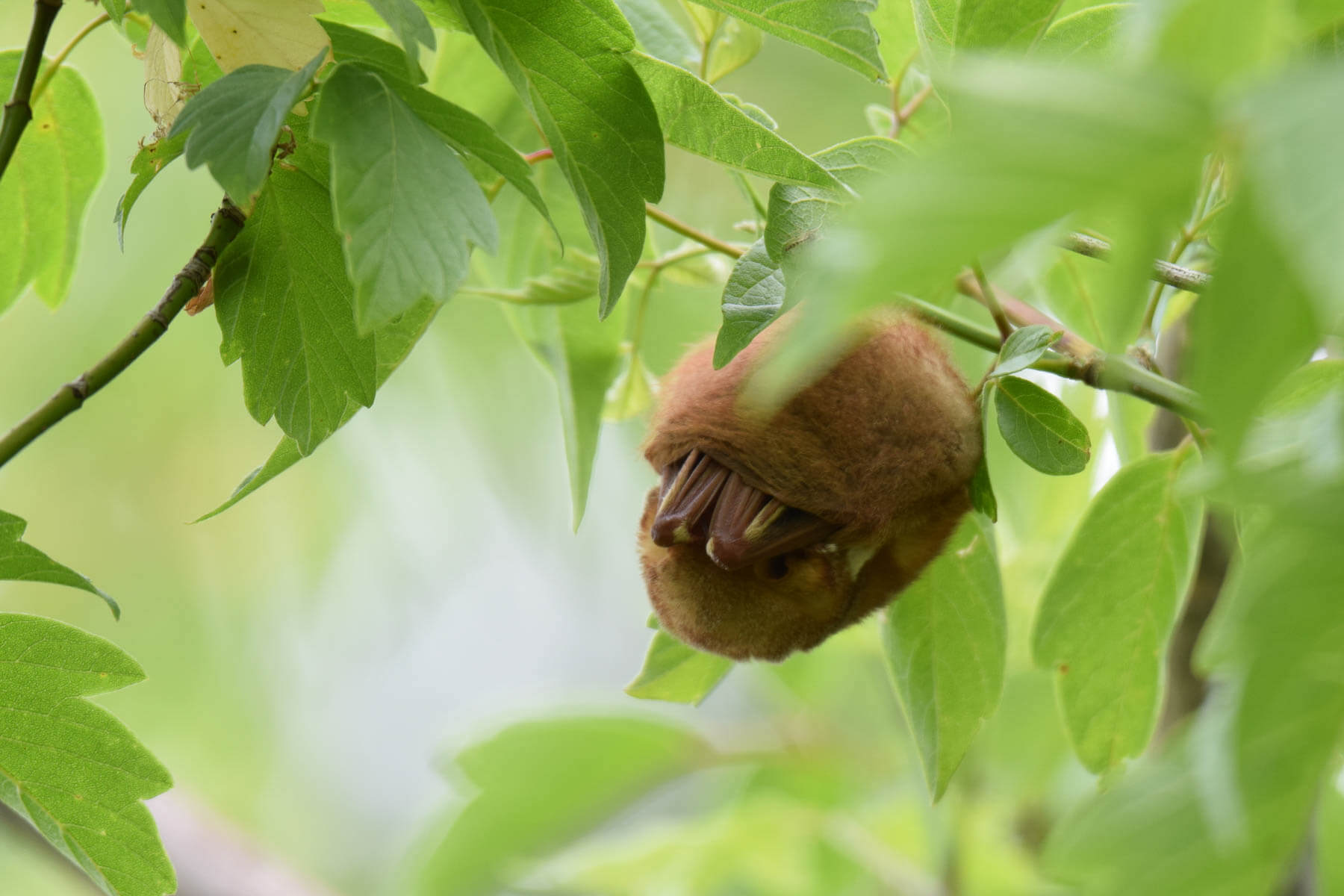
Birds and fish aren’t the only species that migrate in the Chesapeake—so do some mammals! The eastern red bat is a miniature ball of warm red fur that spends its summer days feasting on insects in treetops all over the Chesapeake and beyond, from Canada to Florida. Don’t be surprised if you haven’t seen one—very few people walk around looking up, and you still may not spot them when you try. Their tucked-in body and tendency to hang from one foot help eastern red bats blend in perfectly with their surroundings, looking like a dried leaf or perhaps a pine cone. While their long fur helps protect them from the cold, they reach their limit when temperatures fall below 20 degrees Fahrenheit. Very little is known about their winter habits—some tree bats living in warmer Chesapeake watershed states may even overwinter in place under leaf litter—but they generally head south to where insects are still active, following the same famous Atlantic Flyway as our migratory birds.
Monarch butterfly
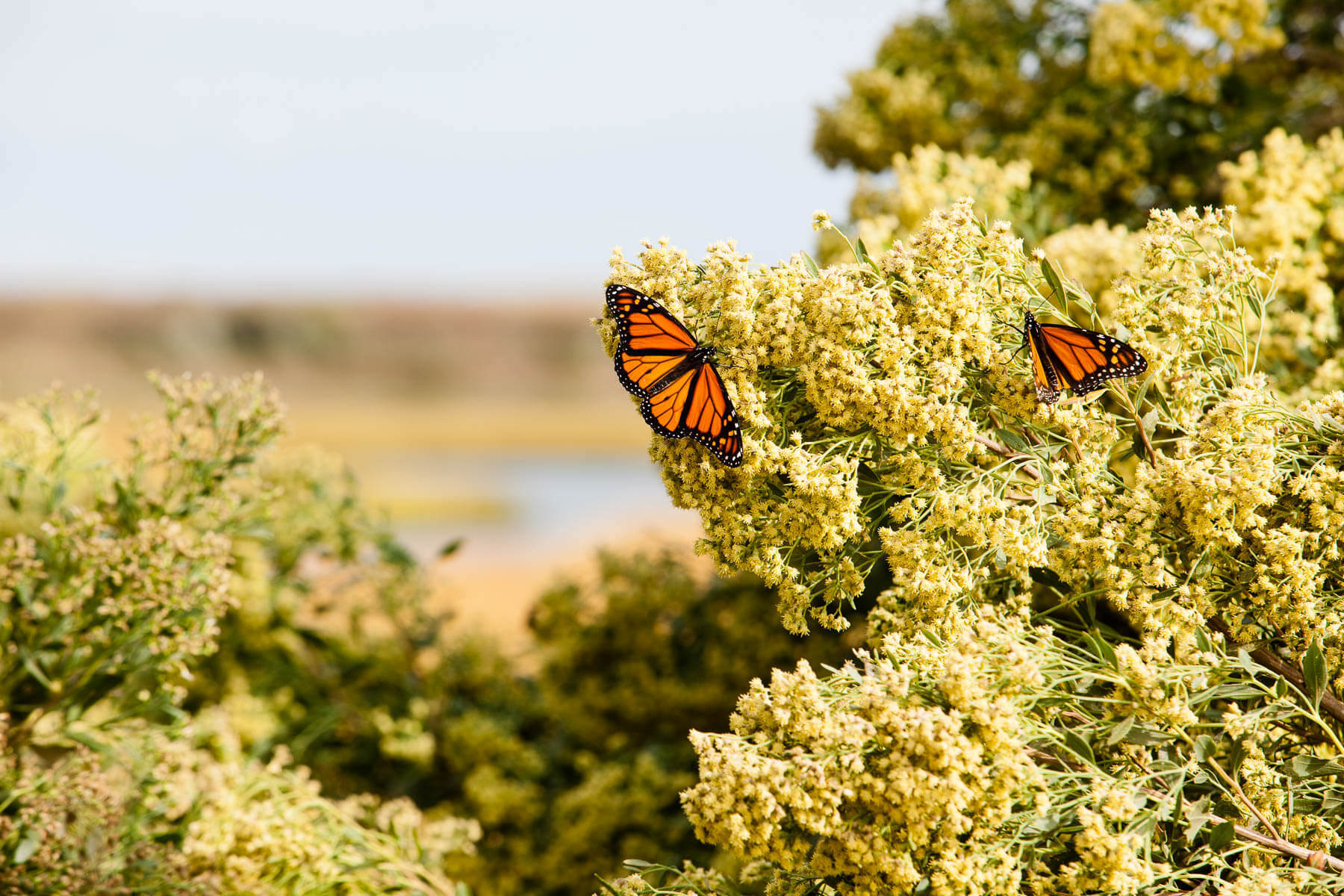
The beautiful black, orange and white of the monarch butterfly is a welcome sight, which people all over the Chesapeake encourage by planting nectar flowers for the adults to feed on and milkweed for the caterpillars to eat. As temperatures cool and fall moves in around September and October, monarch butterflies join a spectacular collective migration and head for the warmer air currents and abundant food in the Gulf States and Mexico. Monarch butterflies avoid crossing large bodies of water as they migrate, making peninsulas throughout the Chesapeake prime spots for monarch viewing. The Coastal Virginia Wildlife Observatory counts and tags monarchs at the Eastern Shore of Virginia National Wildlife Refuge, where visitors are welcome.
American eel
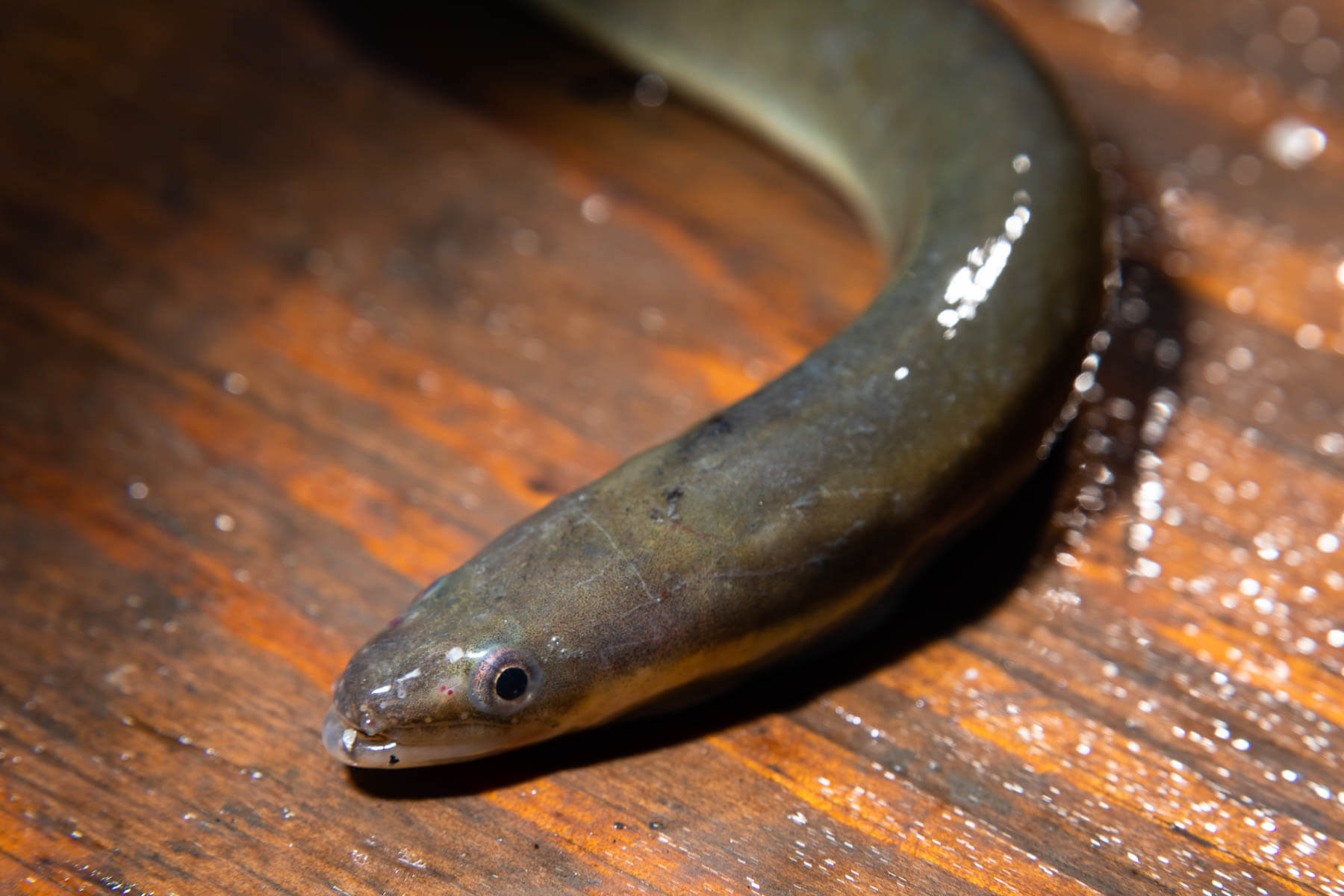
In the tributaries and backwaters of the Chesapeake Bay lives a unique animal, the American eel. They hide themselves in rocks or sediment during the day, coming out to feast at night on mollusks, crustaceans, worms and small fish. The American eel is the only catadromous fish in the Chesapeake, meaning that it lives in freshwater and travels to the ocean to spawn. In the fall, mature eels swim out to the Sargasso Sea and die there after spawning. Their babies—tiny and transparent at this stage, called “glass eels”—make their way up the East Coast with the help of ocean currents. They grow and gain pigment along the way, arriving in the Chesapeake darker in color and about two to three inches in length. Some stay in the Bay, but most will swim many miles up the Chesapeake to freshwater where they will live their lives as adults. Though they are predators of mollusks, eels play an important role in the survival and movement of the eastern elliptio, a mussel. Baby mussels called glochidia attach themselves to the gills of host fish like the American eel to travel to new waters. Efforts to restore fish passage, like removing dams, help ensure this life cycle continues.
Animals that don’t live in the Bay region full-time still play an important role in the lifecycle and health of the ecosystem, a complex system that connects throughout the seasons. Learn more about wildlife and their home in the Chesapeake by visiting the Chesapeake Bay Program.
Thumbnail photo of eastern red bat courtesy of Judy Gallagher/iNaturalist CC BY-NC.

Comments
There are no comments.
Thank you!
Your comment has been received. Before it can be published, the comment will be reviewed by our team to ensure it adheres with our rules of engagement.
Back to recent stories